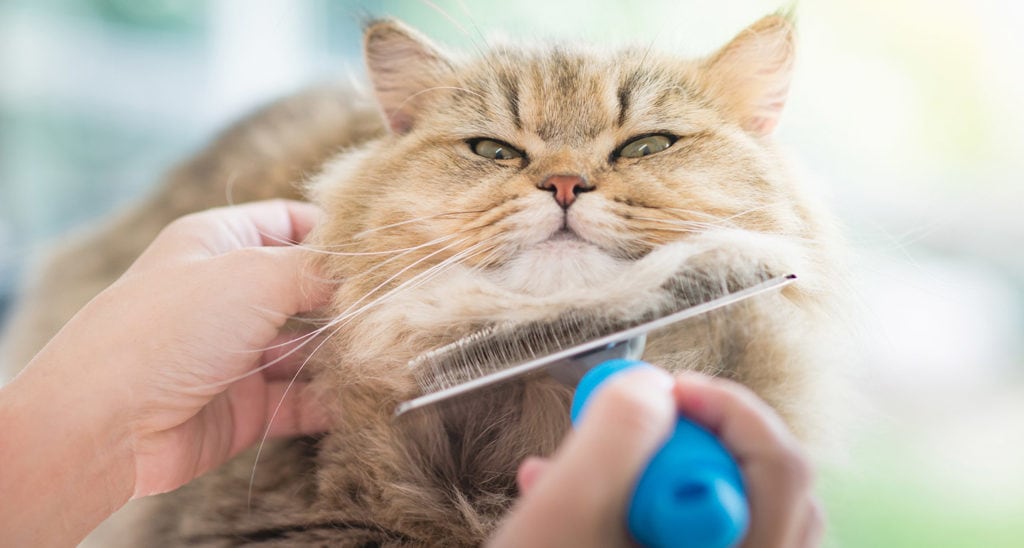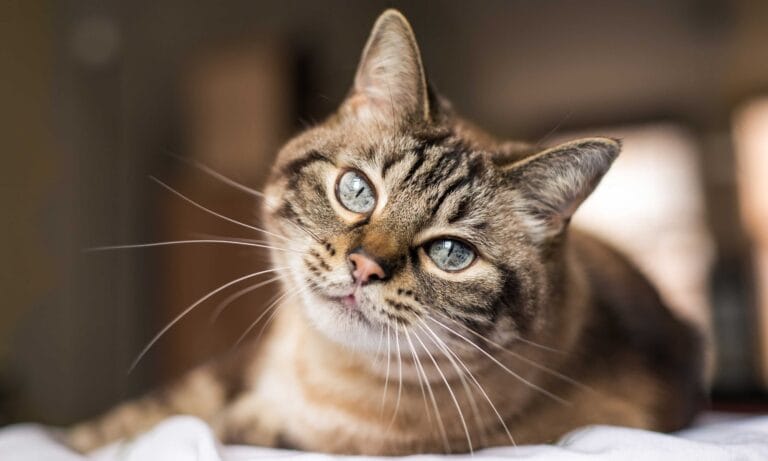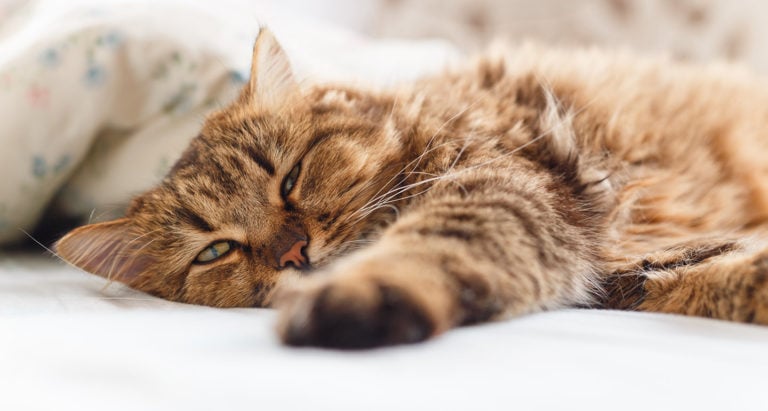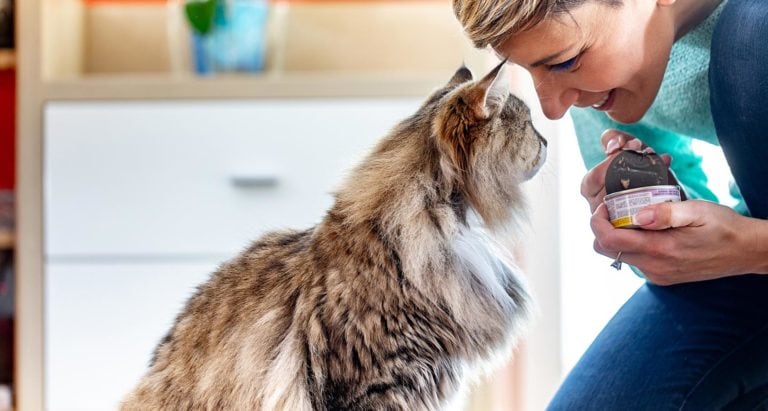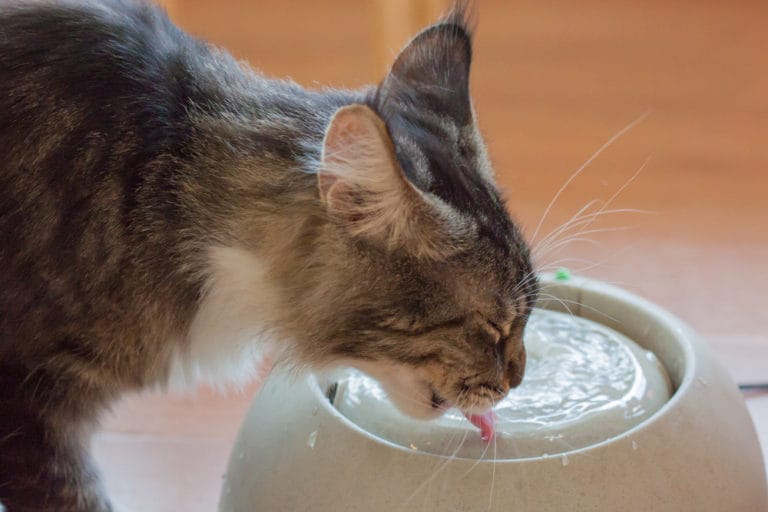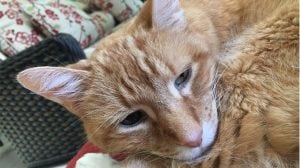If you have also noticed your cat isn’t grooming themselves as much as they used to, or their coat appearing dull and scruffy, it could be due to one or more specific age-related matters.
In This Guide:
Why Does My Senior Cat Have Matted Hair?
Most cats will continue to groom themselves, or self-groom, throughout their lifetime. Some are more enthusiastic about it than others, but most cats take a significant interest in their personal hygiene. When a cat no longer shows an interest in grooming, it’s important to look for the underlying causes, as an old cat with matted fur may have an underlying health issue.
Dental Issues
The easiest place to start your investigation into why a senior cat isn’t self-grooming as often is their mouth. What’s the condition of the teeth and gums? If their mouth is painful or sore because of damaged teeth or infected gums, they may avoid grooming altogether.
Like people, cats require regular dental care. It’s very common for cats to develop periodontal disease at a young age. This problem only worsens with time, so it’s important to consult your veterinary on the best way to maintain your cat’s dental hygiene.
Learn how to brush your cat’s teeth.
Degenerative Joint Disease
Another likely physical impairment that makes self-rooming difficult, if not impossible, is osteoarthritis. A 2008 study by Sheilah A Robertson, BVMS (Hons), PhD, DECVAA, DACAW, DECAWBM (WSEL), CVA, MRCVS, has shown that 90% of cats 12 years and older have some degree of degenerative joint disease.
Arthritis can make it difficult for cats to groom certain areas of their body. For example, arthritis in the neck can interfere with the cat’s ability to bend or twist to reach their back. This can lead to matted fur in one area.
Learn more about arthritis in cats.
Urinary, Bladder, and Kidney Issues
Senior cats may also have trouble keeping themselves clean during and after using the litter box. Possible health issues—such as urinary tract infections—can cause frequent urination, exasperating the problem.
Learn more about litter box problems in senior cats.
Visiting the litter box more frequently can cause more urine-soaked litter to stick to the fur in areas such as the belly, paws, or rectum. If soiled fur is a frequently encountered problem, your cat’s groomer or veterinarian can provide a sanitary trim. With nothing there for litter to stick to for a few weeks, your cat will be a lot more comfortable, and you won’t have to deal with a stinky, gross mess.
The Importance of Keeping Your Senior Cat Well-Groomed
Once you determine and address the cause of fur matting in an old cat, it’s important to also address the quality of the cat’s coat. If left unkempt, a poor-quality coat mats easily, turning tiny tangles into tight knots. This is particularly painful for a senior cat who lacks excess fat and muscle tone. Cat skin becomes thinner and loses elasticity with age, according to Cornell University’s College of Veterinary Medicine. This makes them more prone to injuries such as bruising and tearing. The stress of a matted coat pulling the skin tight can be avoided with simple, proactive measures that will greatly improve the cat’s quality of life.
Please don’t put off grooming an old cat with matted fur because you don’t want to make them uncomfortable. A few moments of minor discomfort or annoyance is far better than the excessive de-matting and intense grooming required for a neglected coat. Frequent, regular grooming is much easier on your cat and more enjoyable for both of you. If the task feels overwhelming, seek out the assistance of a cat groomer who specializes in working with older cats.
How To Groom an Old Cat
To lessen the amount of fur matting on old cats, spend a few minutes every day on some form of assisted grooming. Follow the simple steps below to learn how to groom an old cat.
- Begin by petting your cat from head to tail, seeking out any specific problem areas.
- Gently work through the coat, alternating with a rubber brush to sweep up loose hair; a soft-pin slicker brush to work through tangles; and a stainless steel comb to gently target mats.
- Give extra attention to the hips, hind legs and underside. These areas are where mats commonly form. These spots may also be hypersensitive, so take it slow and be extra gentle.
- If the coat has become matted, apply a little cornstarch, rub it in lightly with your fingers and brush it through. Some of the powder will stick to the coat, making it easier to grip.
- Sometimes simply pulling the knotted fur apart carefully with your fingers will free the mat. If that doesn’t work, a professional groomer should be sought. Mats that are close to the skin must be shaved off with cat-appropriate clippers used by someone familiar with the practice. It’s very easy to cut a cat, and a small nick could turn into a big problem fast.
When deciding where to groom your cat, choose a spot that’s comfortable for both of you. I like to place a rubber-backed carpeted bath mat on top of the washer or dryer. It’s the perfect height and the cats feel content on the soft, secure surface. (Just make sure the machines aren’t running!) The environment should be calm and quiet. Keep plenty of your kitty’s favorite cat treats on hand and provide them often to distract and create a positive association with “beauty time.”
Other tools and products that can be useful when you’re learning how to groom a cat include:
- A cat flea comb, especially if your cat goes outside or shares a home with a dog
- A set of cat nail clippers
- Soft cotton gauze pads for cleaning around the eyes, ears and claws
- A detangling spray
- A bristle brush to work in the powder and distribute natural oils through the coat
Any physical or behavioral changes should be reported to your cat’s veterinarian right away, including changes in self-grooming. Once the underlying cause is determined, you can address any increase in matted cat hair with regular grooming sessions. Besides keeping your kitty healthy and comfortable, they’re also a great way to spend time with your cat and a great bonding opportunity. After all, every moment we get to spend with our senior cats is a precious one.
Next, watch our Chewtorial on how to manage your cat’s shedding.
This content was medically reviewed by a veterinarian.Like this story? Check out more of our favorite reads:
Share:
